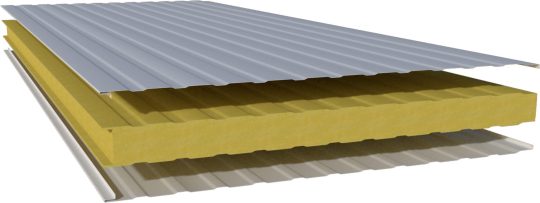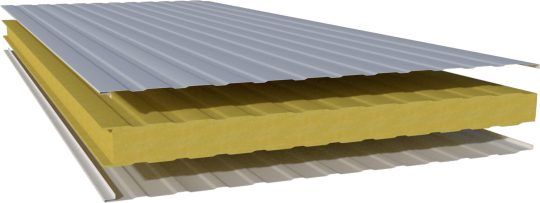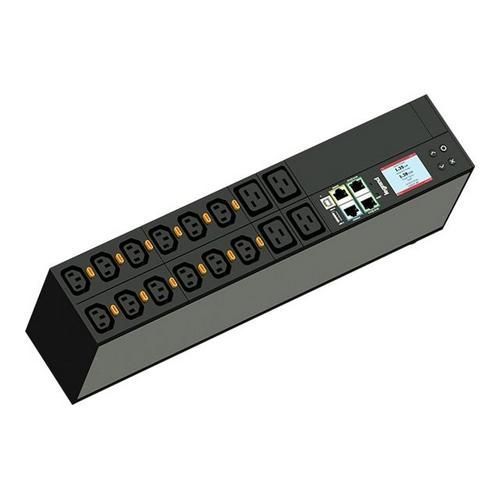Don't wanna be here? Send us removal request.
Text
Cost-Effectiveness of PUF Sandwich Panels in Construction Projects
The construction industry continually evolves, with new materials and techniques being developed to improve efficiency, sustainability, and cost-effectiveness. One such innovation that has gained significant traction is using PUF (Polyurethane Foam) sandwich panels. These panels, produced by Isoflex, a reputable PUF Sandwich Panels Manufacturer, offer many benefits that make them a preferred choice for modern construction projects. This blog will delve into the cost-effectiveness of PUF sandwich panels and explore why they are becoming an integral part of contemporary construction practices.

Understanding PUF Sandwich Panels
PUF sandwich panels are composite materials of a lightweight core material, typically polyurethane foam, sandwiched between two layers of durable facing materials such as galvanized steel, aluminium, or other metal sheets. This configuration provides an excellent combination of strength, thermal insulation, and lightweight properties, making them ideal for various applications in the construction industry.
Key Benefits of PUF Sandwich Panels
Before diving into their cost-effectiveness, it's essential to understand the key benefits that PUF sandwich panels offer:
Thermal Insulation: PUF sandwich panels have superior thermal insulation properties, which can significantly reduce heating and cooling costs in buildings.
Lightweight: Despite their strength, these panels are lightweight, reducing the structural load on buildings and simplifying transportation and installation.
Durability: The materials used in PUF sandwich panels are highly durable and resistant to weathering, corrosion, and other environmental factors.
Quick Installation: These panels' modular nature allows for rapid installation,
reducing Labour costs and construction timelines.
Fire Resistance: Many PUF sandwich panels are designed with fire-resistant properties, enhancing the safety of buildings.
Cost-Effectiveness of PUF Sandwich Panels
When evaluating the cost-effectiveness of any construction material, it's crucial to consider both the initial investment and the long-term savings. PUF Sandwich panels excel in both areas, making them a financially savvy choice for construction projects.
Initial Investment
While the upfront cost of PUF sandwich panels might be higher than some traditional materials, their overall value becomes evident when considering the following factors:
Reduced Structural Costs: The lightweight nature of PUF sandwich panels means that buildings require less structural support, leading to savings on foundational materials and labour.
Lower Transportation Costs: Due to their lightweight, transportation costs are significantly lower compared to traditional building materials.
Simplified Installation: The ease of installation reduces labour costs and shortens the construction timeline, leading to faster project completion and earlier occupancy.
Long-Term Savings
The long-term savings associated with PUF sandwich panels are substantial and contribute to their overall cost-effectiveness:
Energy Efficiency: The superior thermal insulation properties of PUF sandwich panels result in significant energy savings.
Maintenance Costs: The durability and resistance to environmental factors mean that buildings constructed with PUF sandwich panels require less maintenance and have a longer lifespan.
Sustainability: Many PUF sandwich panels are made with eco-friendly materials and processes, which can contribute to green building certifications and potential tax incentives.
Applications of PUF Sandwich Panels
The versatility of PUF sandwich panels allows them to be used in various construction projects. Some common applications include:
Commercial Buildings: Office complexes, shopping centers, and warehouses benefit from the energy efficiency and quick installation of PUF sandwich panels.
Residential Buildings: Homes and apartment complexes can achieve better insulation and reduced energy costs with these panels.
Cold Storage: The excellent thermal properties make PUF sandwich panels ideal for cold storage facilities and refrigeration units.
Industrial Buildings: Factories and industrial units require durable and low-maintenance materials, making PUF sandwich panels a suitable choice.
Conclusion
PUF Sandwich panels represent a cost-effective, efficient, and sustainable solution for modern construction projects. Their superior thermal insulation, durability, and lightweight properties make them a valuable addition to any building, offering both initial cost savings and long-term financial benefits. By partnering with Isoflex, a reputable PUF Sandwich Panels Manufacturer, construction companies can use high-quality materials that enhance their projects' overall performance and cost-effectiveness.
The adoption of PUF sandwich panels is not just a trend but a smart investment towards building a more sustainable and economically viable future. Whether for commercial, residential, or industrial applications, these panels offer unmatched benefits that make them a cornerstone of modern construction practices. As the industry continues to evolve, the role of innovative materials like PUF sandwich panels will only become more prominent, driving the construction sector towards greater efficiency and sustainability.
0 notes
Text
Cost-Effectiveness of PUF Sandwich Panels in Construction Projects
The construction industry continually evolves, with new materials and techniques being developed to improve efficiency, sustainability, and cost-effectiveness. One such innovation that has gained significant traction is using PUF (Polyurethane Foam) sandwich panels. These panels, produced byIsoflex, a reputable PUF Sandwich Panels Manufacturer, offer many benefits that make them a preferred choice for modern construction projects. This blog will delve into the cost-effectiveness of PUF sandwich panels and explore why they are becoming an integral part of contemporary construction practices.

Understanding PUF Sandwich Panels
PUF sandwich panels are composite materials of a lightweight core material, typically polyurethane foam, sandwiched between two layers of durable facing materials such as galvanized steel, aluminium, or other metal sheets. This configuration provides an excellent combination of strength, thermal insulation, and lightweight properties, making them ideal for various applications in the construction industry.
Key Benefits of PUF Sandwich Panels
Before diving into their cost-effectiveness, it's essential to understand the key benefits that PUF sandwich panels offer:
Thermal Insulation: PUF sandwich panels have superior thermal insulation properties, which can significantly reduce heating and cooling costs in buildings.
Lightweight: Despite their strength, these panels are lightweight, reducing the structural load on buildings and simplifying transportation and installation.
Durability: The materials used in PUF sandwich panels are highly durable and resistant to weathering, corrosion, and other environmental factors.
Quick Installation: These panels' modular nature allows for rapid installation,
reducing Labour costs and construction timelines.
Fire Resistance: Many PUF sandwich panels are designed with fire-resistant properties, enhancing the safety of buildings.
Cost-Effectiveness of PUF Sandwich Panels
When evaluating the cost-effectiveness of any construction material, it's crucial to consider both the initial investment and the long-term savings. PUF Sandwich panels excel in both areas, making them a financially savvy choice for construction projects.
Initial Investment
While the upfront cost of PUF sandwich panels might be higher than some traditional materials, their overall value becomes evident when considering the following factors:
Reduced Structural Costs: The lightweight nature of PUF sandwich panels means that buildings require less structural support, leading to savings on foundational materials and labour.
Lower Transportation Costs: Due to their lightweight, transportation costs are significantly lower compared to traditional building materials.
Simplified Installation: The ease of installation reduces labour costs and shortens the construction timeline, leading to faster project completion and earlier occupancy.
Long-Term Savings
The long-term savings associated with PUF sandwich panels are substantial and contribute to their overall cost-effectiveness:
Energy Efficiency: The superior thermal insulation properties of PUF sandwich panels result in significant energy savings.
Maintenance Costs: The durability and resistance to environmental factors mean that buildings constructed with PUF sandwich panels require less maintenance and have a longer lifespan.
Sustainability: Many PUF sandwich panels are made with eco-friendly materials and processes, which can contribute to green building certifications and potential tax incentives.
Applications of PUF Sandwich Panels
The versatility of PUF sandwich panels allows them to be used in various construction projects. Some common applications include:
Commercial Buildings: Office complexes, shopping centers, and warehouses benefit from the energy efficiency and quick installation of PUF sandwich panels.
Residential Buildings: Homes and apartment complexes can achieve better insulation and reduced energy costs with these panels.
Cold Storage: The excellent thermal properties make PUF sandwich panels ideal for cold storage facilities and refrigeration units.
Industrial Buildings: Factories and industrial units require durable and low-maintenance materials, making PUF sandwich panels a suitable choice.
Conclusion
PUF Sandwich panels represent a cost-effective, efficient, and sustainable solution for modern construction projects. Their superior thermal insulation, durability, and lightweight properties make them a valuable addition to any building, offering both initial cost savings and long-term financial benefits. By partnering with Isoflex, a reputable PUF Sandwich Panels Manufacturer, construction companies can use high-quality materials that enhance their projects' overall performance and cost-effectiveness.
The adoption of PUF sandwich panels is not just a trend but a smart investment towards building a more sustainable and economically viable future. Whether for commercial, residential, or industrial applications, these panels offer unmatched benefits that make them a cornerstone of modern construction practices. As the industry continues to evolve, the role of innovative materials like PUF sandwich panels will only become more prominent, driving the construction sector towards greater efficiency and sustainability.
0 notes
Text
The Evolution of Power Distribution Units: From Basic to Advanced Features
Introduction:
Power Distribution Units (PDUs) are the backbone of modern data centers, telecommunication networks, and IT environments. They ensure efficient distribution of electric power to various components, preventing potential issues like power surges, short circuits, and overloads that could disrupt operations and lead to costly downtimes. In this article, we will delve deeper into the evolution of PDUs, from basic models to advanced units equipped with smart capabilities, and explore their significance in powering our digital world.

What Is a Power Distribution Unit (PDU)?
At its core, a Power Distribution Unit (PDU) serves as a conductor in an orchestra, harmonizing the flow of electricity within a data center or IT facility. It takes high-voltage and amperage power input and breaks it down into more manageable voltages, which are then distributed to servers, networking equipment, and other critical components within the facility.
Types of PDUs:
Basic PDUs: These are the fundamental building blocks of power distribution. Similar to multi-outlet power strips, basic PDUs provide essential power distribution without any additional features or capabilities. They are ideal for small or medium-sized environments where simplicity suffices.
Metered PDUs: Metered PDUs come equipped with a built-in meter that measures the total load applied to the unit. This information is crucial for preventing overloads and ensuring optimal power management. Metered PDUs provide visibility into power usage, allowing data center managers to make informed decisions about capacity planning and resource allocation.
Switched PDUs: Switched PDUs offer remote management capabilities, allowing users to control individual outlets remotely. This level of flexibility and convenience enables tasks such as turning power on or off for specific devices, troubleshooting without physical presence, and scheduling power cycles for maintenance purposes. Switched PDUs are particularly valuable in large-scale deployments where efficient power management is essential.
The Importance of PDUs: PDUs play a critical role in ensuring the reliable operation of data centers and IT environments. Their significance lies in:
Efficient Power Distribution: PDUs optimize energy usage by ensuring that the right amount of electricity reaches each piece of hardware, thereby preventing wastage.
Risk Mitigation: By safeguarding against power-related mishaps such as surges and overloads, PDUs protect valuable equipment from damage and minimize the risk of downtime.
Scalability: PDUs are designed to accommodate the evolving needs of data centers, allowing for easy expansion and reconfiguration as requirements change over time.
Modern PDUs and Smart Capabilities: Today's PDUs are equipped with advanced features that empower data center managers to monitor, manage, and optimize power distribution effectively. Some of the key smart capabilities include:
Remote Monitoring and Management: Data center managers can remotely monitor and control PDUs, enabling tasks such as switching outlets, rebooting systems, and load balancing. Remote management enhances operational efficiency and reduces the need for manual intervention.
Environmental Monitoring: Many PDUs feature built-in sensors that track environmental conditions such as temperature and humidity. By maintaining optimal environmental parameters, these PDUs ensure the longevity and reliability of equipment housed within the data center.
Predictive Analytics: PDUs leverage historical data to predict potential issues and trends, enabling proactive maintenance and minimizing the risk of downtime. Predictive analytics help data center managers identify and address potential issues before they escalate into critical problems, thereby improving overall system reliability and availability.
Conclusion:
From basic power distribution to advanced smart capabilities, PDUs have evolved significantly to meet the evolving needs of modern data centers and IT environments. As technology continues to advance, PDUs will play an increasingly crucial role in powering our digital world. Behind every server rack, reliable power distribution units orchestrate the symphony of electricity, ensuring the seamless operation of critical infrastructure.
0 notes